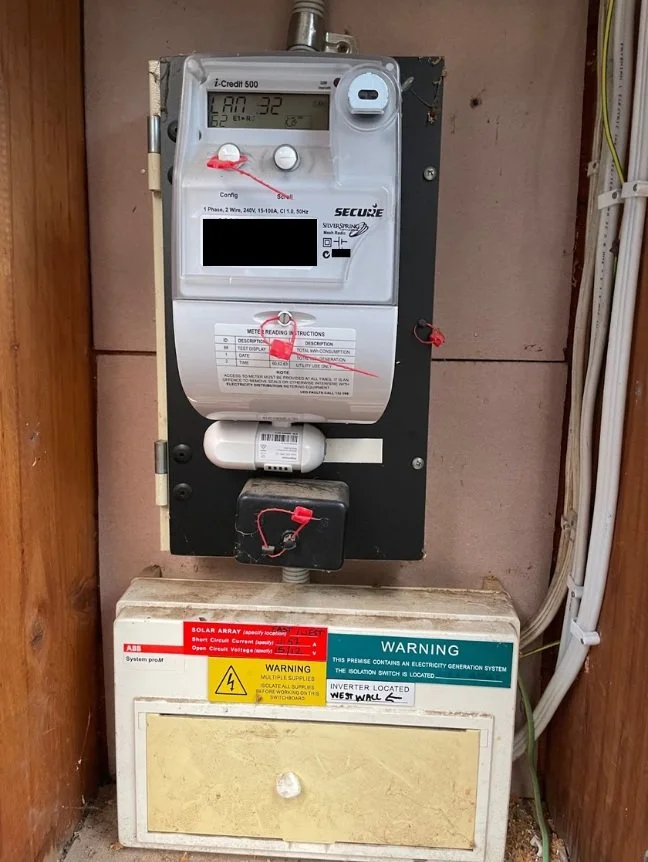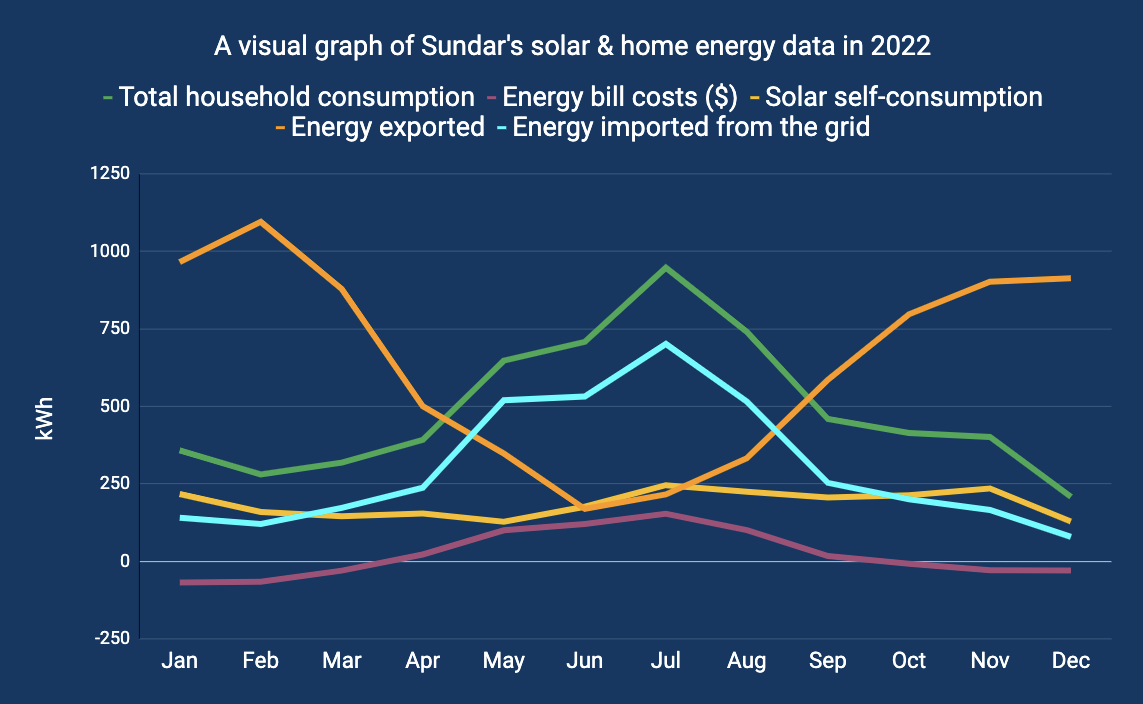Powersensor enables energy bill reduction for Melbourne family through solar and home energy monitoring
A Powersensor (wireless sensor) installed at Sundar’s inverter, providing him visibility of his solar energy data. A second sensor is installed at his digital meter to provide the full picture of his home’s solar consumption, in dollars and kilowatts.
Customer Profile
Sundar | Melbourne, VIC
Solar inverter: SolarEdge HD Wave, 9.9kWh
Installed inverter in 2021
Energy bill shock is all over the news, and despite having solar already installed, Sundar from Melbourne was seeing his energy bills go up. (Sound familiar?)
Sundar and his family found it difficult to identify which home appliances were using the most energy. He wanted to reduce the family’s energy bills and carbon footprint further, so Sundar decided to add the Powersensor Advanced Solar Monitoring Solution on top of his existing inverter monitoring.
It was time to put Powersensor to the test.
The first month of using Powersensor
Before Powersensor, Sundar was using the microinverter monitoring app originally supplied with the 9.9kW system that he had installed in 2021. This app was, however, only just OK.
“It was only good at answering very basic questions,” Sundar questioned. “Is my solar inverter working, how much is the system producing and when is it producing more?”.
The app also does not show when Sundar’s system was generating excess solar to export to the grid, so he wasn’t able to maximise his solar consumption.
Furthermore, the inverter app was also unable to provide him with important information regarding his total household and home appliance consumption. This meant Sundar was not able to compare his bill to see savings in dollars and kWs.
Sundar knew this was a frustration shared by many.
“ECA’s recent ‘Pulse Survey’ found that half of all household consumers (49%) felt they did not have access to the information they needed to make decisions around their energy use.”
Usage insights lead to huge savings
By upgrading his existing monitoring system to Powersensor, Sundar was able to view data and gain insights that fall outside what traditional inverter monitoring provides. He was able to reduce his power bills and work towards a cleaner carbon footprint as additional benefits.
A Powersensor (wireless sensor) installed at Sundar’s digital meter, detecting the currents flowing through to monitor his home energy usage and feed-in to grid.
With Powersensor, he was able to view his appliance usage in kWh and cost. It allowed him to identify the biggest contributors to his energy bills and to control where the energy costs were coming from in his home.
Becoming an expert saver
For the first month, Sundar monitored the “Now” and “Appliances” interfaces in his Powersensor mobile app a few times a day. As he continued to use the app, he began to identify patterns of both his household energy usage and solar production.
He noticed his family’s energy peak usage was in the morning and evenings, while his solar system’s peak generation was during the day.
As time went on and he became more experienced in using the Powersensor app, he worked out he could make significant savings by adding three additional Powersensor Wi-Fi Plugs and placing them on appliances that were then able to run at different times of the day - specifically heavy energy consumers; the dishwasher, clothes dryer and washing machine.
Through the app, Sundar could easily see his appliances’ energy usage and how much excess solar his system was producing. As a result, his family combined this information to time-shift running their appliances to start at peak generation times. All three appliances themselves had programmable settings to start at later times.*
Information is the key to saving
This was not just information; it was actionable information. All from a DIY install, no tools required solar and energy monitor, which connects to a free app on your phone. No installer or electrician is required either. Money-saving results began immediately.
A visual comparison of Sundar’s solar and home energy data throughout 2022.
Fast results. Negative bill for 8 months!
The financial savings became apparent quite quickly. Sundar was able to identify he had been paying 24c / kWh to import energy, while only receiving 10c as his solar feed-in tariff. When his energy supplier dropped his feed-in tariff to 7c there was a huge 300%+ difference.
But as a result of being able to better monitor his consumption, he had a negative bill for 8 months throughout 2022 and had a bill during winter.
By installing Powersensor, Sundar was able to drill down into the usage of appliances. He and his family now maximises self-consumption from their solar installation by staying informed and in turn, paying fewer and lower energy bills every year.
Sundar’s Powersensor Solution
Advanced Solar Monitoring Solution






